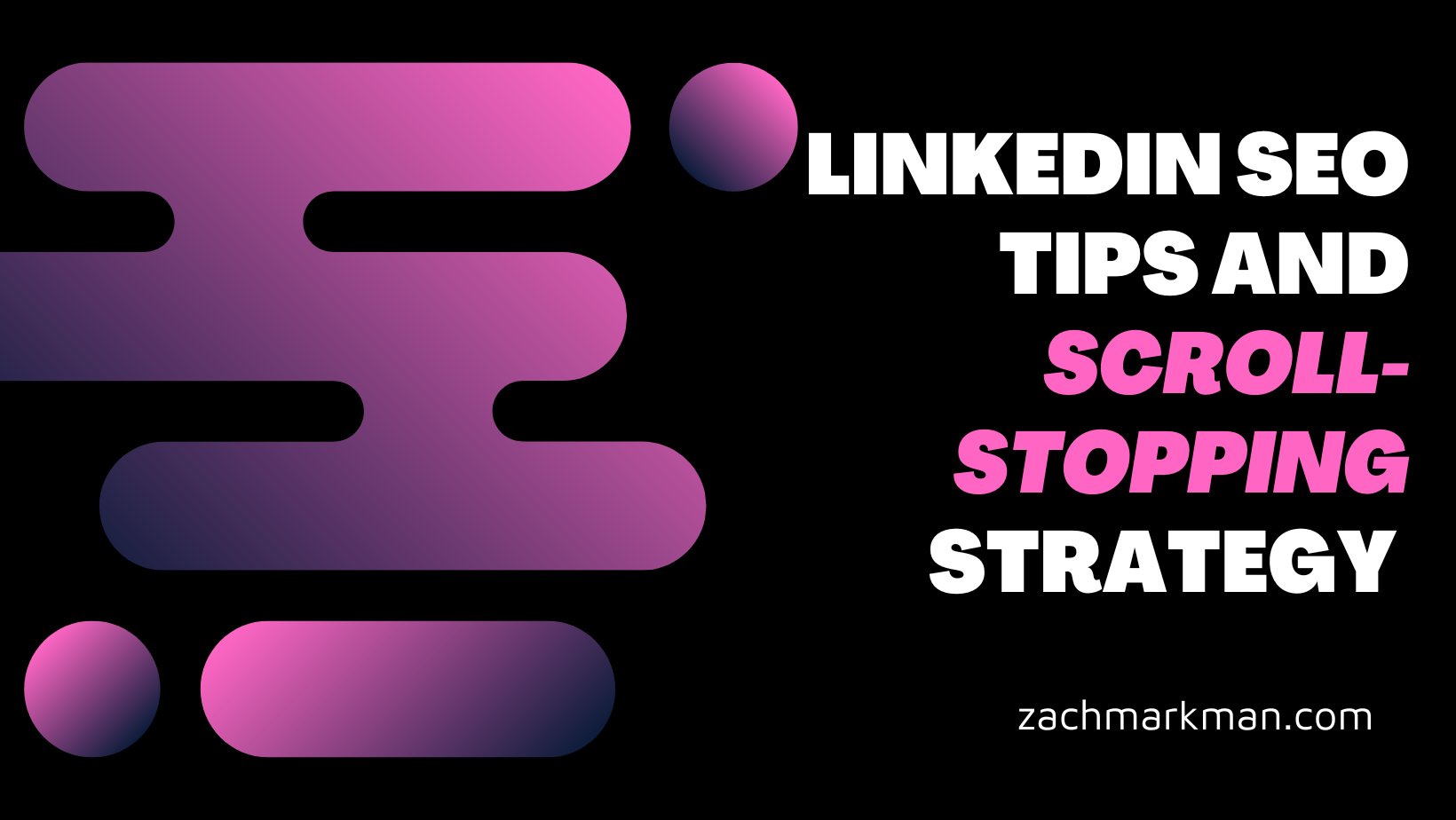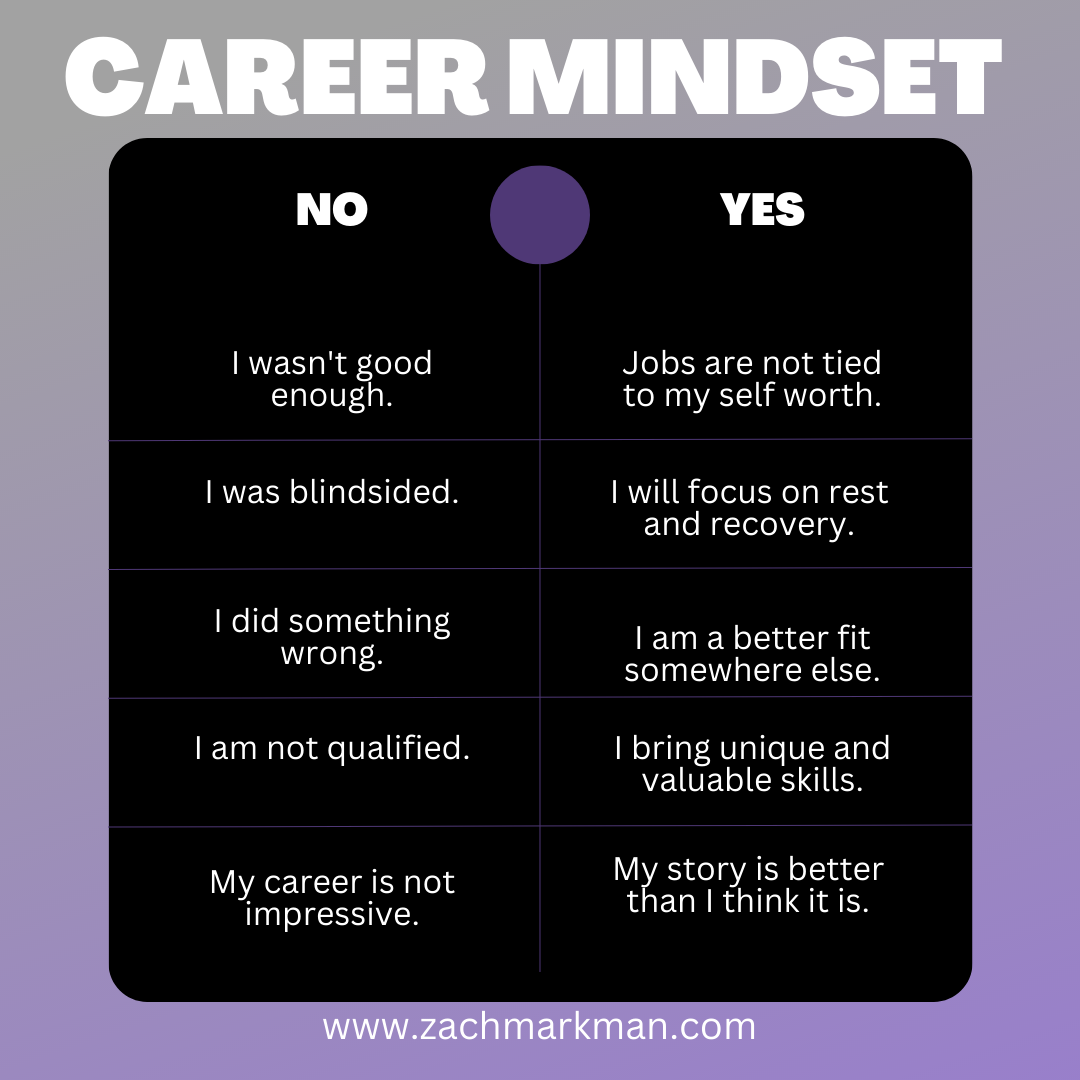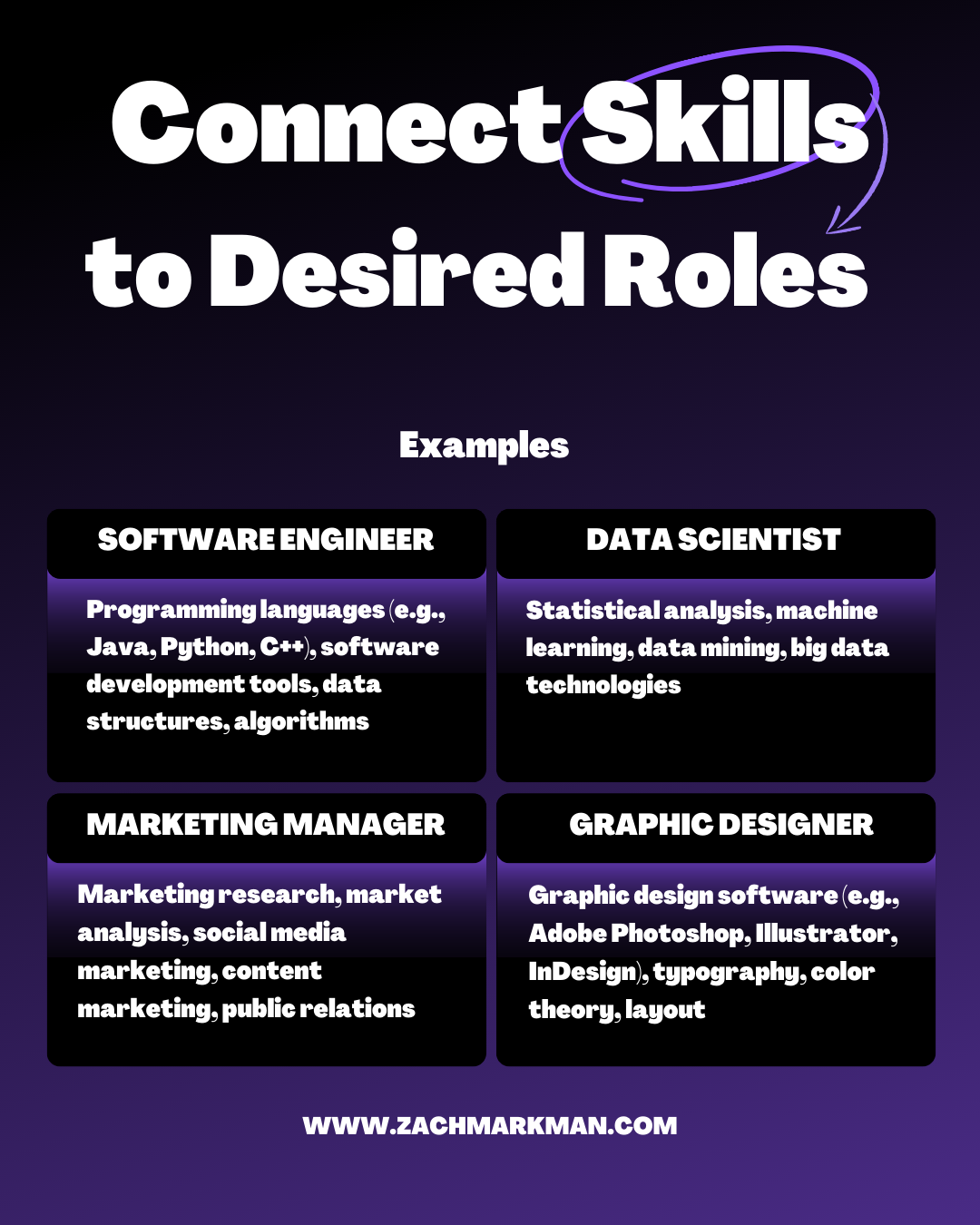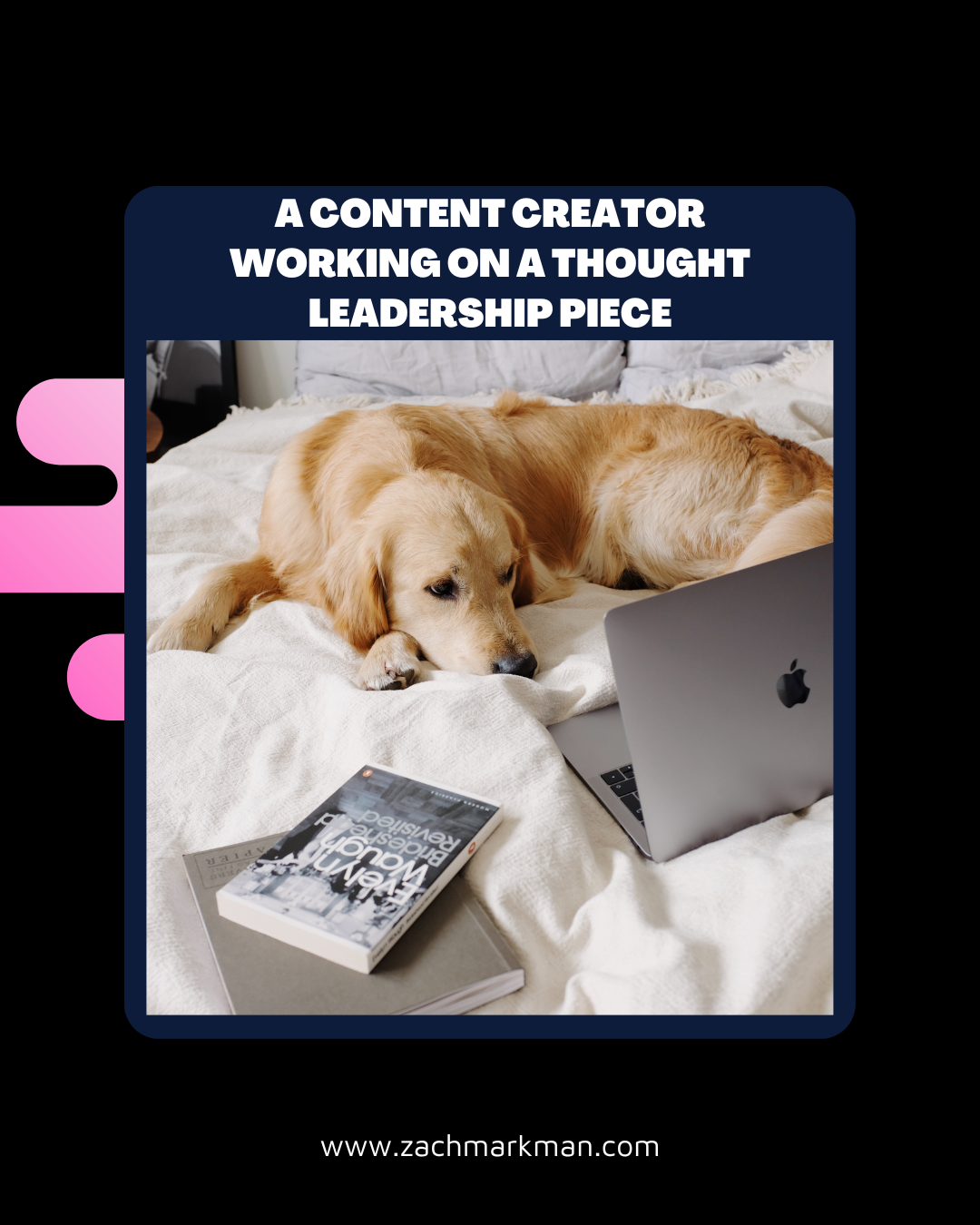LinkedIn Profile Optimization and the Job Search in 2023
Time to find a new role?
Transitions in life are hard enough as it is, so read this article to make life a little easier on yourself.
In this post I share modern tips to help you fight for the attention of talent recruiters and hiring managers.
The approach I recommend uses mixes psychology fundamentals with bread-and-butter algorithm placating.
If you are interested in learning from a professional, read on.
And welcome to the boring-to-many, fun-for-me, but necessary-for-most world of LinkedIn optimization!
By the way, I also offer LinkedIn help as a service! Click the button below to contact me and learn more.
It’s not magic. It’s strategy.
What Does LinkedIn Optimization Even Mean?
Good question.
Does your profile pass this test?
To answer this, we need to start by explaining why Linkedin exists.
Back in 2002, during the era of early internet optimism, a man by the name of Reid Hoffman started a web platform to "connect the world's professionals to make them more productive and successful," according to LinkedIn.
A major part of that mission involves a recruiting platform simply called LinkedIn Recruiter.
In a nutshell, recruiters search for employees like you through a separate product from the public one you are likely familiar with. Though it might not be part of your work day, it is a key part of the LinkedIn product for many professional talent finders.
LinkedIn profile optimization is the process of curating your profile content for an audience of hiring managers and recruiters.
The people who hire you for your next job may already be searching for you, but you probably won't hear from them if you don't have a highly-specific, optimized LinkedIn profile with relevant keywords to a job position recruiters actually hire for (and a content calendar you stick to.)
Tip #1: Adding keywords is one crucial step towards an optimized profile, but the best LinkedIn profiles use a professional headshot for a profile picture.
What a Recruiter Wants, What a Recruiter Needs
Does your profile answer these questions confidently?
Recruiters like it when their job is easy (duh.)
Do your part to help them evaluate you and you are helping yourself.
It’s a “help us, help you” situation.
You might have to totally redo your profile.
Unless you are a professional writer (or maybe even if you are), a re-do is probably warranted.
If you write too much, use too many words, or obfuscate your story with jargon, you are helping no one.
See how I try to make short, sometimes one-sentence paragraphs?
That's because I know it's less likely to make your eyes glaze over before you ever start reading.
Think of your profile as an advertisement, and what you are selling is solutions.
You probably don't like generic ads with bombastic, impossible claims. The recruiter equivalent to that is a profile with lots of purple, colorful language but no strength to it.
Stick to facts, don't lie about your work history, and use language that won't put recruiters to sleep.
Tip #2: Be succinct with your language — no adverbs, no bombastic claims, no run-on sentences.
Confidence is Everything
Fake it until you make it.
Look, I know that if you are looking for a new job there is a good chance you were let go from your last one.
That sucks. Super not fun.
Don’t beat yourself up about it.
It happens.
Your “job” now is to maximize your chances of getting your next opportunity.
The way to do that is to put yourself in the shoes of your target.
If you are a recruiter, you want to impress your client with strong candidates who can step in and fill a role with the minimum amount of training.
That's the service recruiters provide - easy labor fulfillment.
They WANT to sell you to their clients.
That means you had an ally in this before you ever got started.
Before you take any action in your job search, I recommend you start with positive self-talk.
Give yourself credit for all your hard work, even if your bosses haven't.
If you are confident on your profile and in your interviews, you are helping other people help you!
Tip #3: You aren’t “unemployed”… you are “excited for your next opportunity.”
Write For the Job You Want
Think of LinkedIn profiles like menus.
While a restaurant menu teases your tastebuds into ordering food, your LinkedIn profile is an appetizer for the work you do.
Be specific and do not try to be all things to all people!
Instead, pick a job or two you would be happy with and reframe your profile content (experiences, skills, etc.) through the lens of that role.
If you don't have a specific job title (or several related ones) in mind right now, that should be one of the first things you do before doing more work to optimize your LinkedIn profile.
When recruiters use LinkedIn, they are searching for candidates with the right combination of experiences, education, and skills. The best candidates know the game and plan out their profiles to impress people. This allows recruiters to filter through hundreds or even thousands of potential candidates and quickly find those who are best suited for the job opening.
By properly matching the skills in your profile to the job title you're seeking, you are giving yourself an advantage over folks who don't put any thought into it. And if you aren't putting thought into your LinkedIn profile, do you really expect to stand out in the depths of search results against LinkedIn members well-versed in the glorious art of profile optimization?
For example, if a recruiter is looking for sales professionals with "marketing and product development" experience, then listing "marketing," "product development," and "sales" in your profile will show them immediately that you have the relevant skills they are looking for and make it easier for them to identify you as an ideal candidate.
But also think about this from a practical perspective. If the job you want is in marketing and branding, who would trust a marketer that shows a lack of awareness of their own personal brand?
Put in the work to make sure your profile visitors are wowed by your professionalism and picture-perfect qualifications (made easier to recognize by the clever use of relevant keywords.)
There are always companies hiring. Help the recruiters find you and you are helping yourself!
Share Content for Search Visibility
Two words: thought leadership.
I get the general sentiment around somewhat vapid terms like "thought leadership.”
Hey, I’m even on your side there. Much of the internet is bad.
The “professional internet” can be even worse. (See: business influencers.)
But people like us need to take a deep breath and think about the pragmatic SEO implications when you publish thought leadership content.
LinkedIn takes your content and monetizes it with ads. The local search engine’s job is to repurpose existing content and deliver it to new audiences. When it works well, you are happy with the results and Microsoft is happy to make money off your time and attention. Any content that sits on servers but is not delivered to relevant audiences is a sunk cost to the hosts.
Writing thought leadership pieces or any other kind of insightful content helps build up personal brand awareness, but it also acts as food for the algorithm to help connect you with labor-hungry recruiters and employers.
Through content sharing you can create an online presence that demonstrates your knowledge and experience in the field you are applying for, while also showing your career commitment and professionalism.
Content sharing allows you to showcase your knowledge by providing valuable insight into topics related to the job you are applying for. This could include sharing blog posts, articles, or even videos that demonstrate your expertise and understanding of the field.
Even if you don’t have valuable insights… the reality is that posting B- content is better than not posting at all. Aim high, but don’t aim for perfection. Perfection is the enemy of “done.”
By using relevant keywords in your content, you can put the search algorithm to work for you and potentially get thousands of impressions.
Use tasteful and relevant hashtags to help put your content in the results of appropriate search results pages. Though we may not intuitively think of LinkedIn as a search engine, try out some of these actionable tips and see what happens to your visibility in your LinkedIn network and beyond. My educated guess is your page views will skyrocket if you are consistent.
Now you are starting to think like an expert in content marketing. Put relevant content that utilizes your core skills in front of people who can connect you with job opportunities.
Stand out from the crowd and hope to improve your odds of making search appearances by borrowing a bit of insider tricks for search engine optimization.
Tip #4: Share content in LinkedIn groups for even greater visibility.
Your First Impression
The first impression you make on potential employers and recruiters is absolutely critical.
To make a great first impression, begin by crafting a captivating headline that stands out and accurately reflects the professional qualities that you bring to the table. This could include a job title, skillset, or desired role. Your headline should be short and sweet. Here is mine right now:
My headline leans into storytelling.
If my goal was to land employment instead of looking friendly to my readers, I would pick a few jobs I want like this:
Digital Copywriter + Content Writer + Voice Strategist
Your profile photo should also follow suit with professionalism and appropriate dress. You don't want to appear unprofessional or sloppy in your online appearance – even if it's only an image. High-quality photographs are always preferable over selfies or group shots.
Pay close attention to how you word the summary section of your profile. Make sure you use language that is concise yet still conveys all of the important information about yourself in an easily digestible way for recruiters who may have limited time to evaluate suitable candidates.
Finally, ensure that all of your experiences are clearly laid out with accurate dates and descriptions as well as any relevant achievements or skills you picked up while in those positions.
Presenting organized and to-the-point experiences demonstrates an understanding of the role to skeptical hiring managers and recruiters. Sifting through a mountain of unoriginal and unqualified applicants is no more fun for them than apathetically applying to many jobs is to you.
Endorsements, Skills, and Recommendations
Request recommendations!
The Endorsements, Skills, and Recommendations section of your profile is key when it comes to optimizing your LinkedIn profile for success.
Endorsements are a way for contacts to vouch for your skills and abilities.
To maximize the endorsements you receive, be sure to add all of the relevant skills you possess that match the job title or descriptions of the roles you are targeting. More skills = more things to endorse.
Ask your favorite co-workers for endorsements. The more social proof for your competence, the better!
In addition to endorsements, adding skills such as expertise in industry-specific software can also help. That’s because employers can get specific about the skill set they need from labor.
Finally, recommendations can be another great way to demonstrate and highlight your strengths while providing proof that other professionals have had successful experiences working with you in the past. Different than endorsements, recommendations allow people at varying levels of an organization – such as co-workers, supervisors, clients, etc. – that have interacted with you personally or on a professional level in some capacity to leave a review detailing their experience with you and why they think you would make a great addition to any team.
Tip #5: You only need one company to say “yes” on your job hunt. It doesn’t matter how many times you get told “no.”
Give Yourself a Chance
It’s a competitive job market out there, but you have agency in this situation. Set yourself up for success by taking strategic action then stick at it! Consistency goes a long way.
What do you think about these tips? Would you do anything differently? Do you want me to take a look at your profile and give feedback?
You can reach me at chatwithzam@gmail.com.
Subscribe for more!







